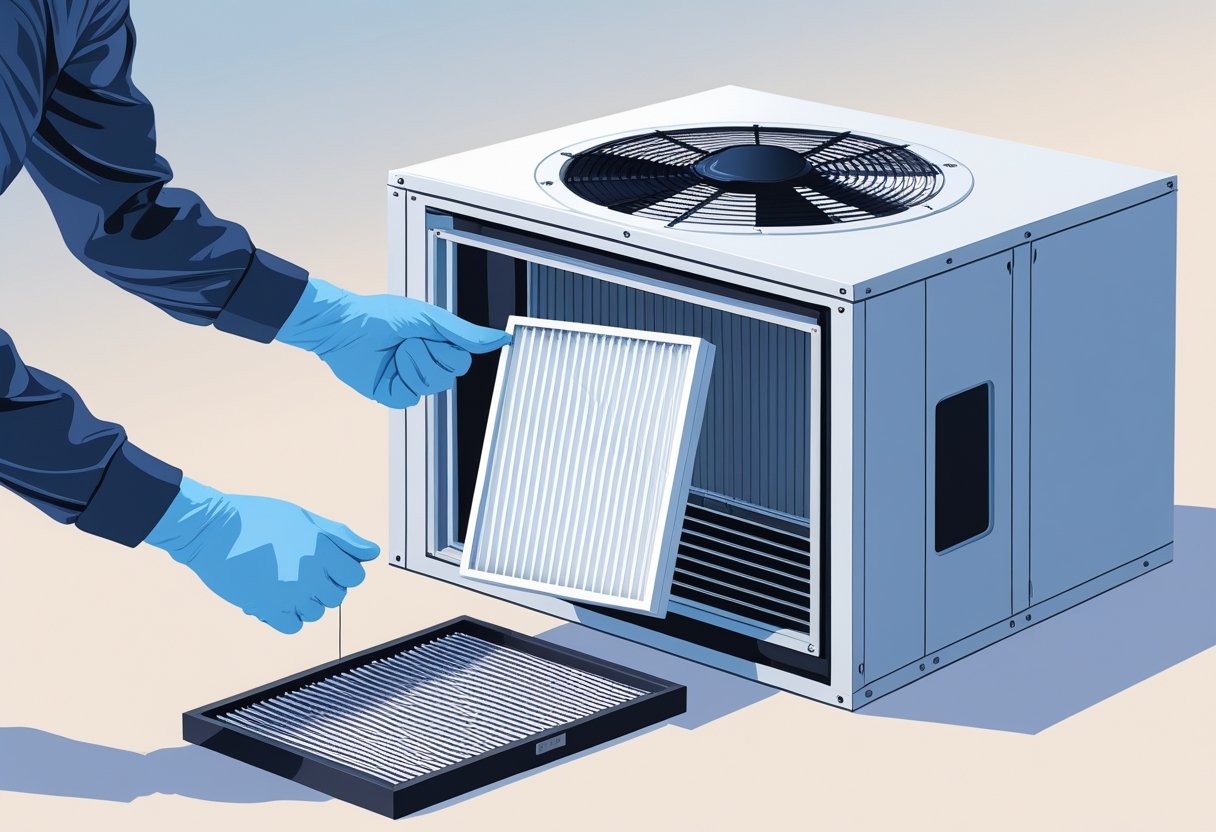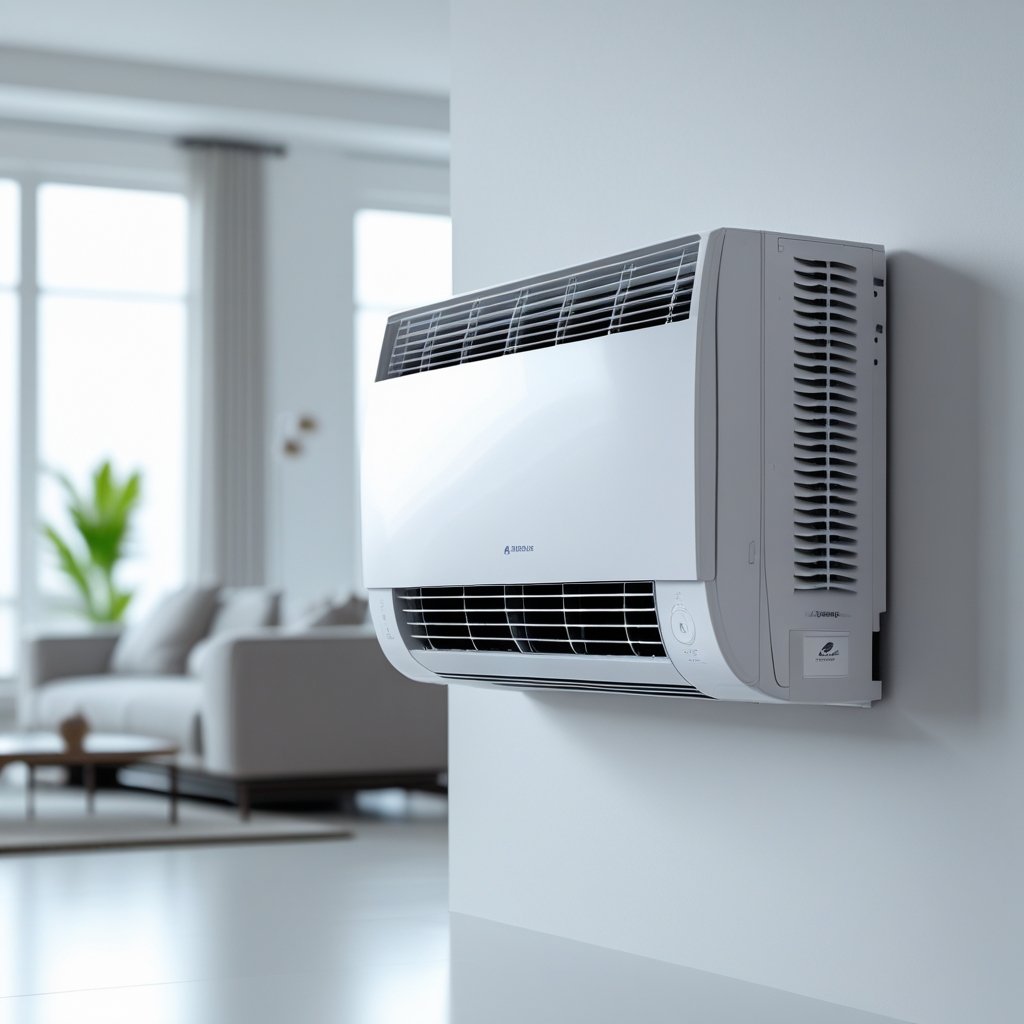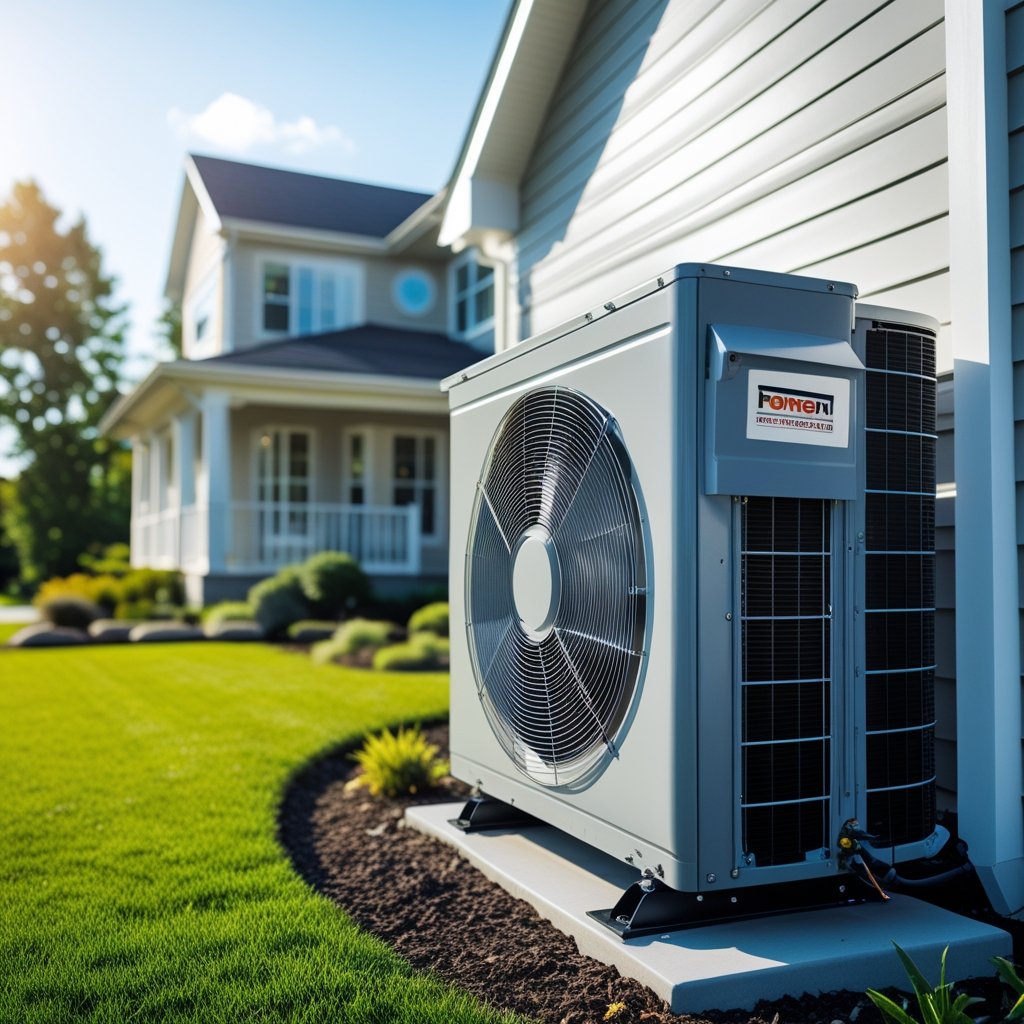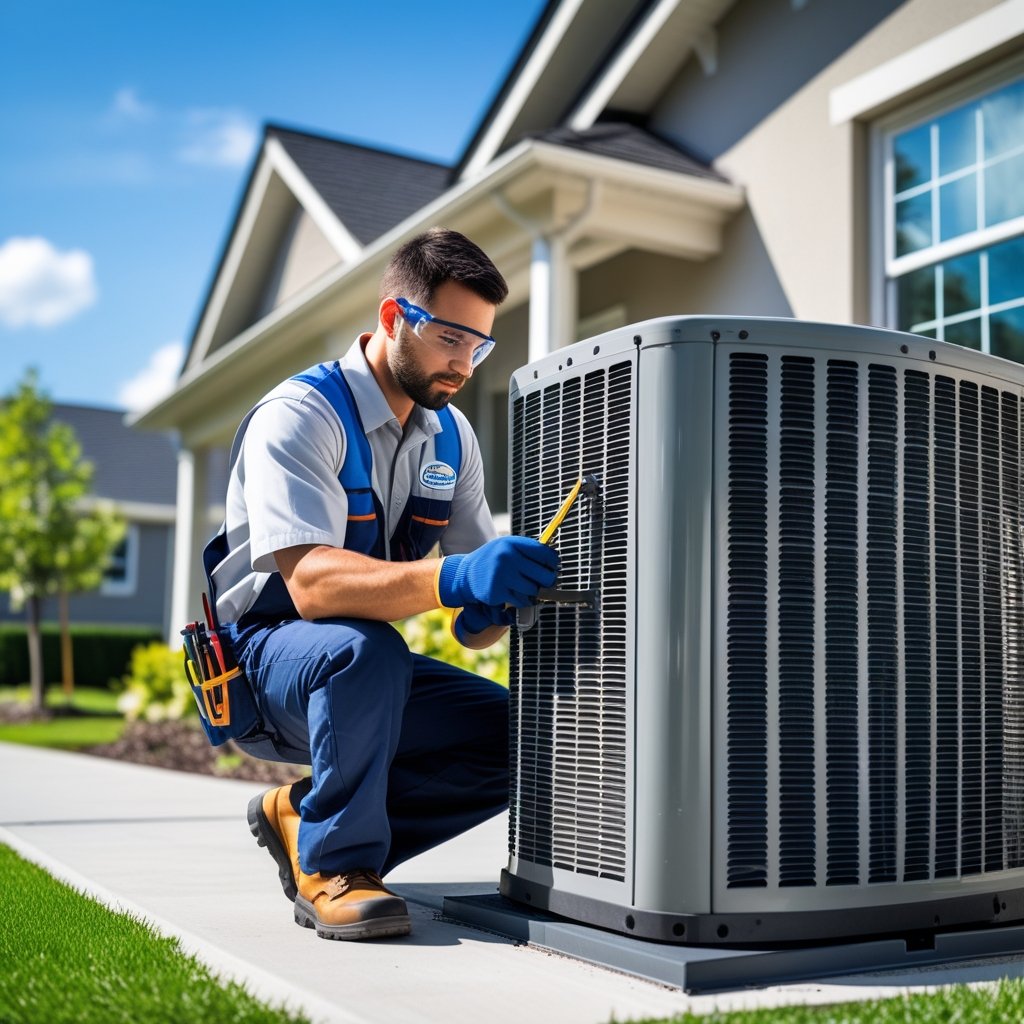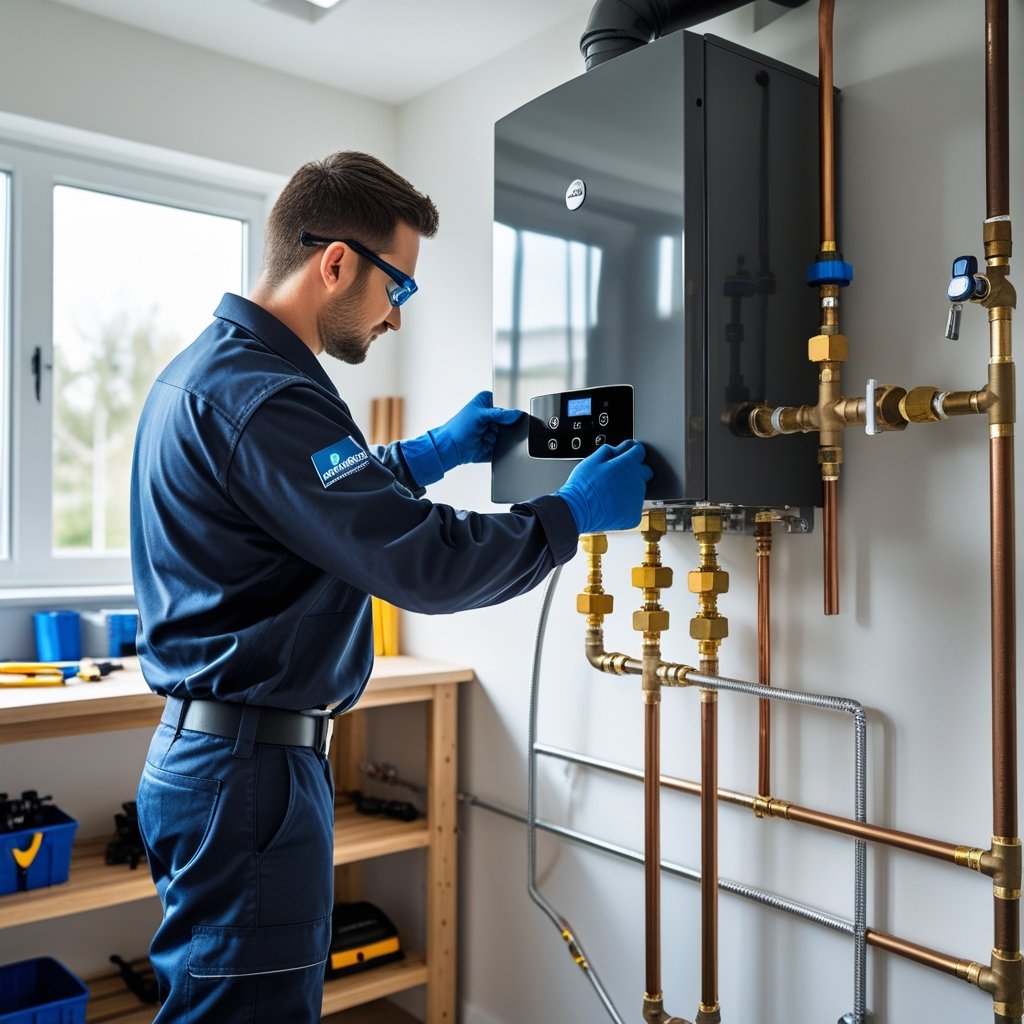Maintaining clean air in your home begins with understanding the importance of regular HVAC filter replacement. Changing your HVAC filters every 30 to 90 days can significantly enhance your system's efficiency and improve indoor air quality. Neglecting this vital task can lead to reduced airflow, increased energy costs, and potential damage to your heating and cooling systems.
At Leo Kob Co., we recognize that many homeowners may not know when or how to change their HVAC filters. This comprehensive guide will provide you with essential tips and steps for a successful filter replacement, ensuring that your indoor environment remains comfortable and safe.
With our expertise in HVAC services in South Central Pennsylvania, you'll gain confidence in maintaining your system effectively. Follow along as we break down the process and share valuable insights that will help you prolong the life of your HVAC unit.
Understanding HVAC Filters
HVAC filters play a crucial role in your home’s heating and cooling systems. They help maintain air quality by trapping dust, allergens, and other particulates. Recognizing the types and functions of these filters can enhance your system's efficiency.
What Is an HVAC Filter
An HVAC filter is a component that removes pollutants from the air circulating in your home. It captures particles as small as 0.3 microns, including dust, pollen, and pet dander. Proper filtration is essential for maintaining indoor air quality and ensuring the system operates at peak performance.
Different filters have varying Minimum Efficiency Reporting Value (MERV) ratings, which indicate how effectively they can filter out particulates. Most residential filters range from MERV 8 to 13. Choosing the right HVAC filter can significantly prolong the lifespan of your system.
Types of HVAC Filters
There are several types of HVAC filters available for various systems. Common types include:
- Fiberglass Filters: Affordable but less efficient. They primarily trap larger particles.
- Pleated Filters: More effective than fiberglass filters, pleated options can capture smaller particles and have superior dust-holding capacity.
- HEPA Filters: High-Efficiency Particulate Air filters, or HEPA filters, remove 99.97% of particles, making them ideal for those with allergies or respiratory issues.
- High-Efficiency Filters: These offer better filtration than standard filters and are recommended for energy-efficient homes.
Selecting the right type will depend on your specific needs and the compatibility with your HVAC system.
Filter Compartment and Air Handler Cabinet
The filter compartment is where the HVAC filter is installed and is usually located near the air handler cabinet. It’s crucial to ensure that this space is unobstructed for optimal airflow.
Regularly check the filter compartment for debris or damage to maintain efficiency. If you're using a standard filter, replace it every 1-3 months. More advanced filters, like HEPA versions, may have longer life spans.
For a seamless HVAC operation, ensure that your air handler cabinet is well-maintained. This encompasses the blower motor and other vital components that depend on clean air to function efficiently. Regular inspections and timely filter changes can help prevent costly repairs, ensuring your system runs smoothly.
Remember, Leo Kob Co. is here to assist with any HVAC maintenance needs you may have to ensure your system stays in top shape.
How to Determine When to Replace Your HVAC Filter
Regularly assessing your HVAC filter is vital for both the longevity of your system and the quality of your indoor air. You can identify when it’s time for replacement by observing a few key indicators related to filter performance and system health.
Signs of a Clogged Filter
You may notice several signs that indicate a clogged filter. If your HVAC system is running for longer periods or making unusual noises, this could signify airflow restriction due to a dirty filter. Moreover, once you hold the filter up to a light source, if little or no light passes through, it’s time for a change. Additionally, frequent adjustments to your thermostat settings may suggest that the filter is preventing your system from maintaining the desired temperature efficiently.
Impact on Indoor Air Quality
A clogged filter can significantly degrade your indoor air quality. These filters are designed to trap dust, allergens, and other particles. When they're clogged, these contaminants can circulate in your home, potentially exacerbating allergies or respiratory issues. If you notice a sudden increase in dust or an unpleasant odor when your HVAC system runs, it’s a strong indication that your filter needs attention. Regular replacements can help maintain a healthier atmosphere for you and your family.
Effects on System Efficiency
Your HVAC system’s efficiency is tied closely to the condition of your air filter. A clogged filter forces the system to work harder, leading to increased energy consumption. This not only raises your utility bills but can also shorten the lifespan of your heating and cooling system. By ensuring timely filter replacements, you can help maintain optimal system efficiency. Consider consulting with professionals from businesses like Leo Kob Co. to determine the best schedule for your specific HVAC system to achieve the most reliable performance.
Step-by-Step Guide to HVAC Filter Replacement
Replacing your HVAC filter is essential for maintaining optimal air quality and system efficiency. This guide will walk you through the critical steps to identify your filter size, locate the filter compartment, and safely remove and install the new filter.
Identifying Your Filter Size
The first step is to determine the correct size and type of filter for your HVAC system. You can typically find this information on the existing filter or in the manufacturer's manual. Most filters have measurements printed on the side, including width, height, and depth. Be sure to write these down or take a picture for reference.
Standard sizes include 16”x20”, 20”x20”, and 14”x30”, but some systems may require custom sizes. If you're unsure, take the old filter to your local hardware store for assistance. Leo Kob Co. recommends verifying the filter's MERV rating (Minimum Efficiency Reporting Value) for optimal filtration based on your home’s needs.
Locating the Filter Compartment
Next, locate the filter compartment within your system. The filter is usually housed in one of several common areas: under a return air duct, in the blower compartment, or behind a grille.
To find it, check your system’s access panels or the return air vent. If you have a larger system, the filter might be located in the air-handler cabinet. If you encounter any difficulty, consult the HVAC system’s manual or reach out for guidance from a professional like Leo Kob Co.
Removing and Installing the New Filter
Once you’ve located the filter compartment, it’s time to remove the old filter. Turn off the HVAC system first for safety. Slide the old filter out carefully, ensuring not to dislodge any dirt or debris into the system.
After removal, inspect the area for dust and clean it using a vacuum or cloth. Then, install the new filter by sliding it into the compartment, ensuring it fits snugly and in the correct airflow direction, indicated by arrows printed on the filter.
Double-check that the filter is secure and close any access panels. Regularly changing your filter will help your HVAC system operate efficiently and improve your indoor air quality.
Selecting the Right HVAC Filter
Choosing the right HVAC filter is essential for maintaining air quality and system efficiency. Key factors include understanding MERV ratings, selecting the appropriate filter type, and addressing any special needs your household may have.
Understanding MERV Ratings
MERV (Minimum Efficiency Reporting Value) ratings indicate how effectively a filter captures particles. The rating scale ranges from 1 to 16, with higher numbers signifying better filtration.
- 1-4: Basic filtration, capturing larger particles like dust.
- 5-8: Medium filtration, effective against allergens such as pollen and mold spores.
- 9-12: Higher-efficiency filters that can trap pet dander and smoke.
- 13-16: High-efficiency filters, including HEPA filters, which capture almost all airborne particles.
When selecting a filter, consider your household's health needs. Higher MERV ratings typically mean better air quality but may restrict airflow, impacting system efficiency. Consulting with a trusted local expert from Leo Kob Co. can help you choose the right balance.
Choosing Between Filter Types
Filters come in various types, each offering unique benefits. The most common include:
- Fiberglass Filters: Inexpensive and disposable, ideal for basic dust filtration. Replace every 30 days.
- Pleated Filters: These filters offer better efficiency and last longer than fiberglass options. They are available in various MERV ratings.
- HEPA Filters: Excellent for trapping very small particles. These are recommended for allergy sufferers but may require more frequent replacement and may not be suitable for all HVAC systems.
Assess your system’s specifications before making a selection. A filter that fits is crucial for effective filtration. Rely on professionals, like those at Leo Kob Co., to ensure you receive the best option for your HVAC system.
Considerations for Special Needs
If anyone in your home suffers from allergies or respiratory issues, you may need to opt for a high-efficiency filter that captures smaller particles, such as HEPA filters.
Consider additional factors like:
- Filter Maintenance: Regular replacement is essential for optimal performance. Mark calendars for seasonal changes to ensure timely replacements.
- Airflow Restrictions: Ensure that the chosen filter doesn't restrict airflow too much, as that can strain your HVAC system and increase energy costs.
- Household Pets: If you have pets, filters designed to capture pet dander and hair can improve air quality significantly.
Taking these factors into account will help you keep your HVAC system running efficiently while maintaining a healthy indoor environment.
The Benefits of Regular HVAC Filter Replacement
Replacing your HVAC filter regularly is essential for maintaining system efficiency and ensuring a healthy indoor environment. Here are specific benefits you can expect from this crucial maintenance step.
Energy Efficiency and Cost Savings
Regular filter replacements dramatically enhance your HVAC system's energy efficiency. A clean filter allows for optimal airflow, which means your system doesn't have to work as hard. This can lead to lower energy bills and reduced utility costs.
Conversely, a dirty filter restricts airflow, increasing energy consumption. You may notice increased energy bills due to your system struggling to maintain comfortable temperatures. By committing to timely replacements, you not only save money but also improve the system's performance long-term.
Extending HVAC System Lifespan
Maintaining clean filters can significantly extend your HVAC system's lifespan. When filters are clogged, the equipment is subjected to unnecessary stress. This can lead to costly HVAC repairs or even premature system failure.
By ensuring filters are replaced regularly, you reduce the strain on your system, allowing it to operate more effectively. This proactive approach leads to fewer breakdowns and extends the overall lifespan of your equipment. Leo Kob Co. emphasizes the importance of regular maintenance to protect your investment and enhance performance.
Improved Indoor Air Quality
One of the most important benefits of regular filter changes is the improvement in indoor air quality. Clean filters capture dust, pollen, and other pollutants, which means cleaner air for your family.
This is especially vital for individuals with allergies or respiratory conditions. A well-maintained filter helps minimize airborne contaminants, creating a healthier living environment. Regular replacements lead to better airflow and decreased levels of indoor allergens, promoting a safer and more comfortable home atmosphere.
Frequently Asked Questions
This section addresses common inquiries regarding HVAC filter selection and replacement. Understanding these aspects can enhance the efficiency and longevity of your HVAC system.
How can I determine the correct size and type of HVAC filter for my system?
To find the right size, check your owner's manual or the sticker on your existing filter. The dimensions are typically listed in inches. Additionally, consider the MERV rating, which indicates the filter's efficiency at trapping particles. A MERV rating between 8 and 13 is generally recommended for residential use.
How often should I replace the filter in my home's HVAC system?
The replacement frequency varies based on filter type and household conditions. Standard 1-inch filters typically need replacement every 1 to 3 months, while high-efficiency filters can last up to 6-12 months. Factors such as pet ownership, allergies, and air quality also influence how often you should change your filter.
Can you explain the process for replacing an HVAC filter in a furnace?
To replace a furnace filter, start by turning off the furnace for safety. Locate the filter compartment, usually near the blower. Remove the old filter and note its size for the new one. Insert the new filter with the airflow direction arrow pointing toward the furnace, then close the compartment and restart the system.
What are the steps for changing an air filter in a wall-mounted AC unit?
For wall-mounted AC units, switch off the power supply first. Remove the front panel by gently pulling it down. Take out the old filter, noting its size. Insert the new filter in the correct orientation and put the front panel back in place before restoring power.
Is there a specific method to replace an HVAC filter in an apartment setting?
In apartments, locate the air return or filter grill, often in shared spaces or near the unit. Turn off the HVAC system before removal. Follow the same steps for size verification and installation as you would in a standard home. Ensure the new filter is securely placed before restarting the unit.
How does one replace the air filter in an automobile's air conditioning system?
To replace an automotive air filter, consult your vehicle's manual for the location of the cabin air filter, typically under the dashboard or behind the glove compartment. Turn off the engine, remove the old filter, and clean any debris. Place the new filter in the same orientation as the old one, ensuring a snug fit before reassembling any panels.
For more detailed assistance, consider contacting professionals from Leo Kob Co., who can provide expert guidance tailored to your specific HVAC needs.

